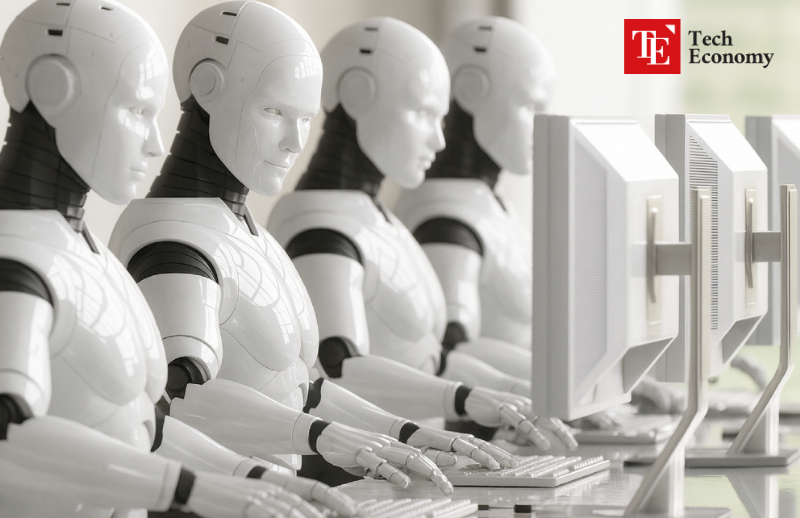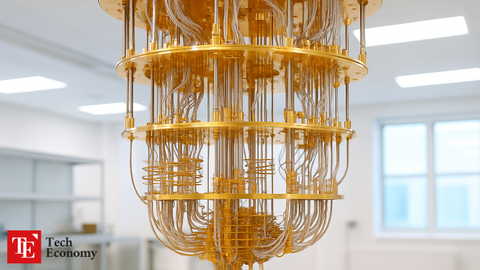U.S. Big Tech Turns to ChatGPT Over Staff, Fueling AI-Driven Job Shortages for Computer Science Graduates
Input
Modified
Coding and other STEM roles Now handled automatically by AI Even computer science majors struggle to find jobs

The rapid advancement of artificial intelligence (AI) is reshaping hiring paradigms, upending long-standing advantages once enjoyed by graduates in science and engineering disciplines, particularly computer science. While these fields historically offered strong job prospects, recent data show rising unemployment among STEM majors, in contrast to improving employment rates for non-STEM graduates traditionally viewed as disadvantaged in the labor market.
STEM Unemployment Surpasses Humanities
According to data released on the 12th (local time) by the Federal Reserve Bank of New York, as of May this year, the average unemployment rate for U.S. college graduates aged 22 to 27 stood at 4.8%. Strikingly, unemployment among humanities and social sciences majors was lower than among STEM graduates. Art history recorded 3.0%, philosophy 3.2%, and foreign languages 4.0%, compared with 7.5% for computer science, 7.8% for physics, and 6% for chemistry.
The trend marks a stark reversal. From 2011 to 2018, STEM graduates had an average unemployment rate of 4.05%, well below the overall average of 5.22%, and from 2019 to 2022 the rate dropped further to 2.2%. However, following the end of the COVID-19 pandemic in 2023, the figure surged to 5.71%, surpassing the overall average of 4.75%. By contrast, non-STEM graduates posted an average unemployment rate of 2.93% between 2023 and 2025, continuing a downward trajectory.
From Recruiter Favorites to AI-Displaced
Just five years ago, computer science graduates enjoyed strong demand in the job market, buoyed by relatively low enrollment numbers and a surge in AI-driven industry demand. But the tide has turned. As more undergraduates pursued computer science with an eye toward employability, competition intensified.
In the U.S., the number of students majoring in computer science and information sciences jumped 40% in five years, surpassing 600,000 last year. According to the Department of Education, bachelor’s degrees conferred in these fields topped 100,000 as early as 2021, a 140% increase compared with a decade ago. Between 2018 and 2023 alone, the number of students majoring in computer and information sciences surged from about 444,000 to 628,000—an increase of nearly 200,000.
Yet AI, once a catalyst for soaring demand, is now coding in place of humans, rapidly displacing developer roles. Beyond coding, AI systems are performing research analysis, design, simulation, and other core STEM functions, sharply reducing demand for entry-level hires, including junior engineers and researchers.
According to the U.S. Department of Labor, software-related job growth, including developer roles, has stagnated over the past 18 months. The number of full-time IT positions posted by companies on the university recruitment platform Handshake fell 30% year-on-year. While average salaries remain high, the outlook for computer science graduates is far from assured.
Even elite institutions such as Stanford and UC Berkeley are feeling the strain. James O’Brien, professor of computer science at UC Berkeley, wrote on social media: “Even top-performing STEM students are not receiving job offers, and this trend is spreading across nearly all STEM fields, including engineering, natural sciences, and mathematics.”

Big Tech’s Trillion-Dollar AI Push Triggers Layoffs
Meanwhile, AI-driven layoffs have persisted for years. Last month, Microsoft announced a restructuring that would cut about 9,000 jobs, just two months after shedding 6,000 in May—reducing headcount by about 4% overall.
In February, Meta Platforms, parent company of Facebook, laid off about 3,600 employees, or 5% of its workforce. CEO Mark Zuckerberg said early this year that the company had decided to “raise performance management standards and move underperformers out more quickly.” Amazon Web Services (AWS), the cloud subsidiary of Amazon—the second-largest private employer in the U.S. after Walmart—also cut hundreds of developer positions last month.
While these companies have not explicitly cited AI as the reason, industry consensus points to AI investment and technological shifts as key drivers. Bloomberg reported that Big Tech firms are pouring vast sums into large language model (LLM) training and data center expansion, offsetting these costs through workforce reductions.
Morgan Stanley estimates that from this year through 2028, investments in semiconductors, servers, and data center infrastructure will total $2.9 trillion. The four major Big Tech firms, including Microsoft, plan to spend $400 billion on AI alone this year.





















